Moments Between Awake and Asleep
Graduation show (Diploma)Academy of Fine Art Munich (AdBK), Germany,2022
 “Moments between awake and asleep”, exhibition installation view, 2022. Photo by Jayhyung Kim
“Moments between awake and asleep”, exhibition installation view, 2022. Photo by Jayhyung Kim
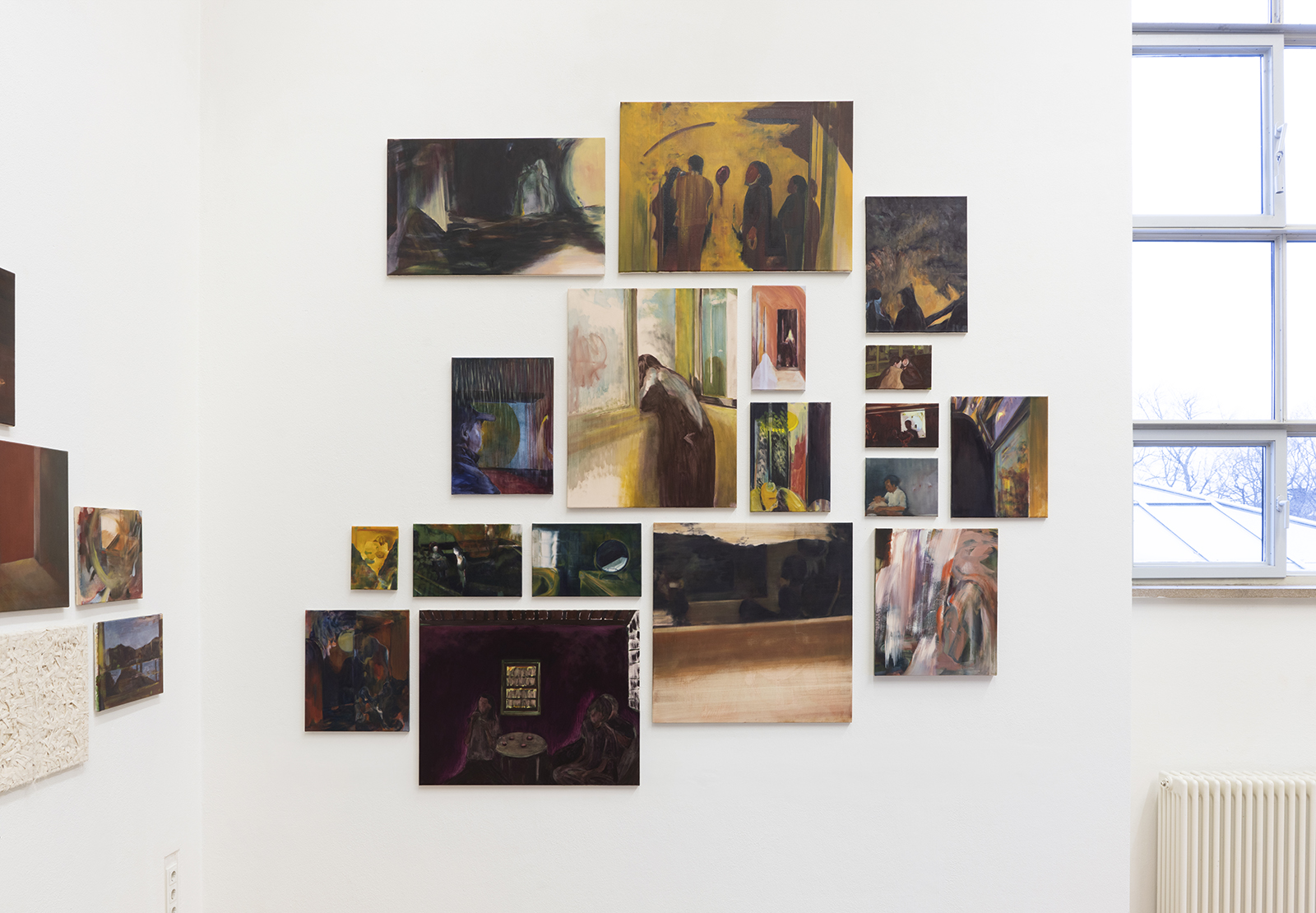

“Foreseen”, 56x78x82cm, oil on canvas on bars, 2021
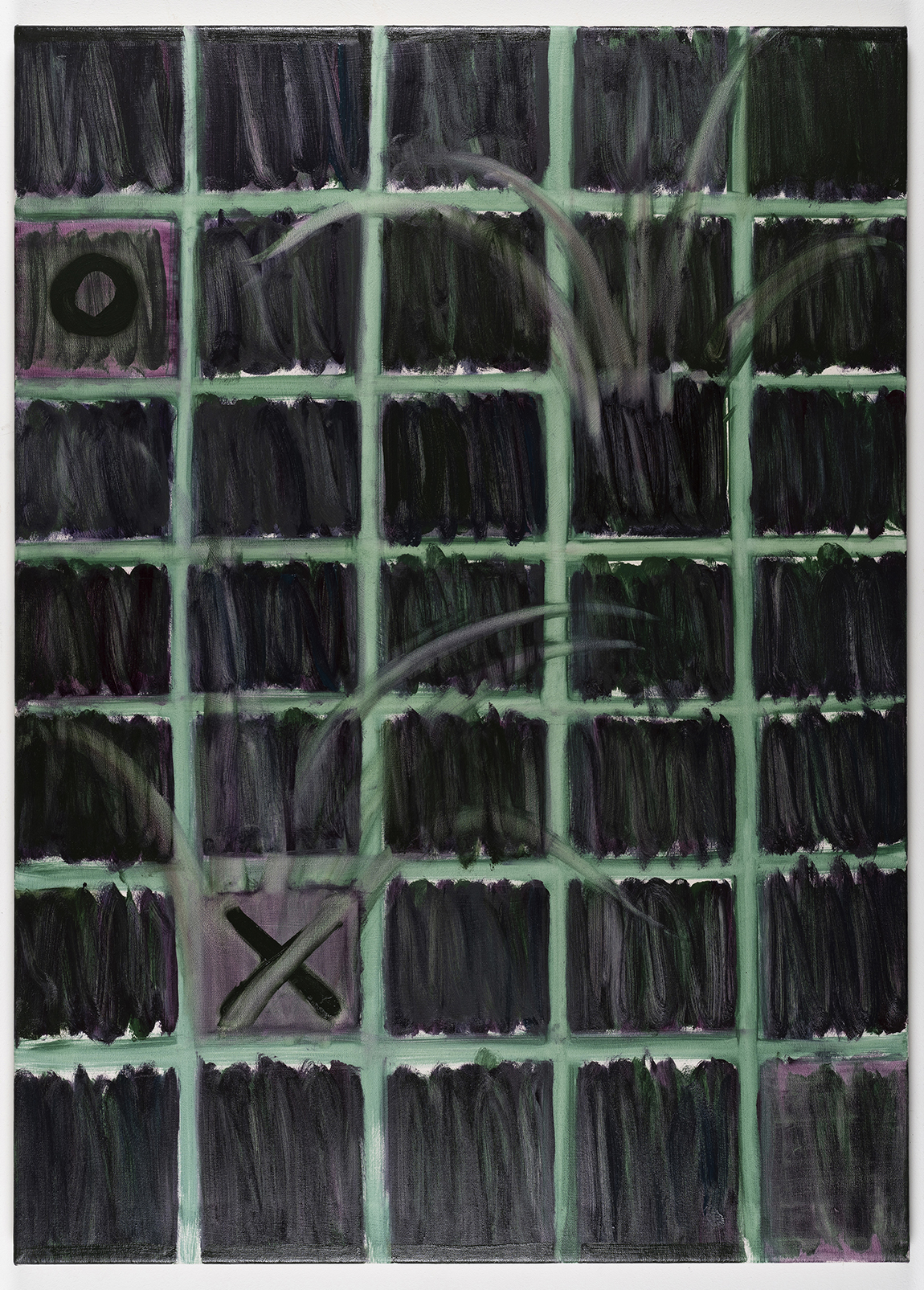
“Ploughing”, 97x70cm, oil on canvas, 2021
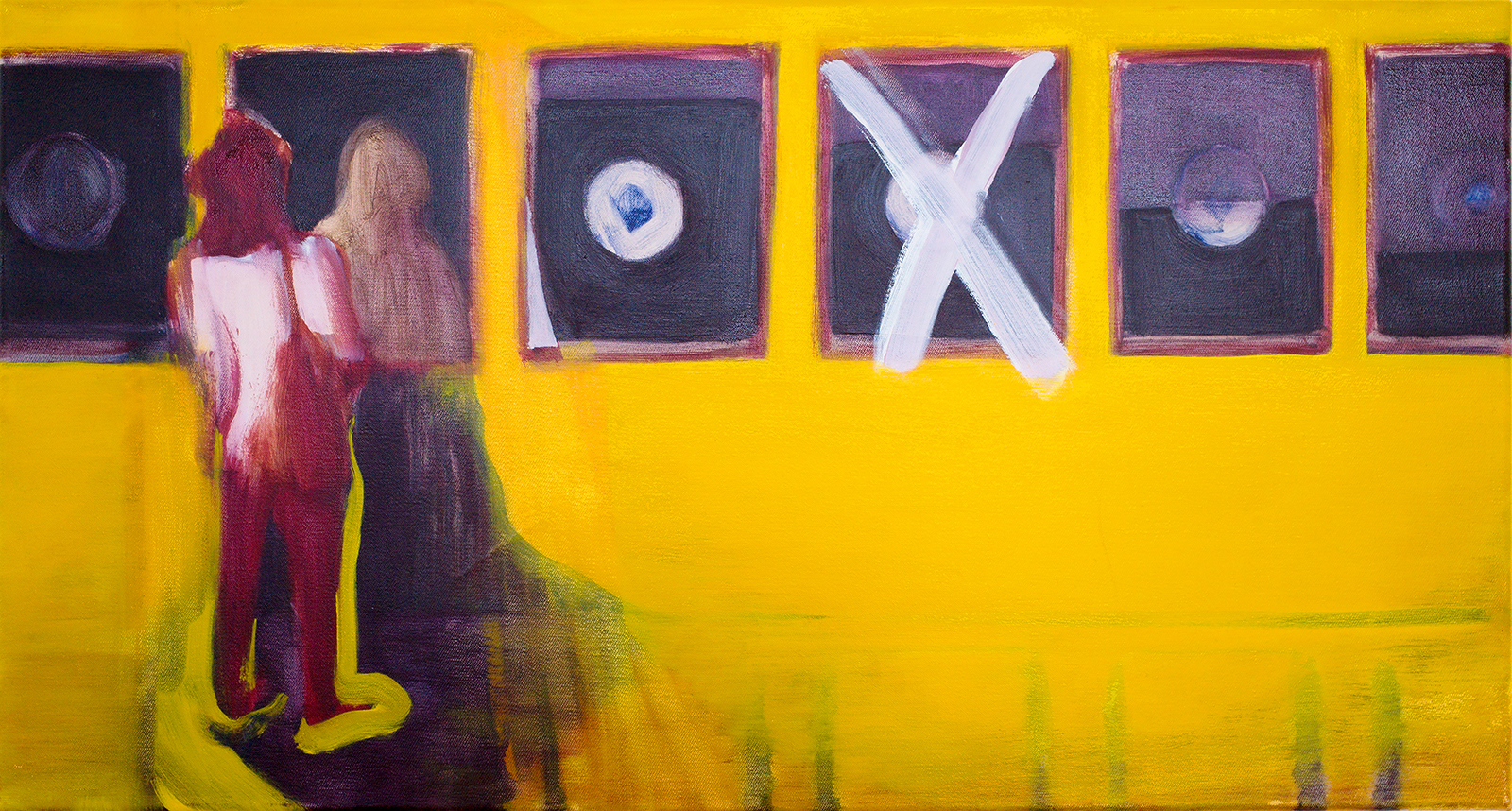
”Study for marks (yellow with figure)”, 30x56cm, oil on canvas, 2020

“Opened door”, 45x30cm, oil on canvas, 2020
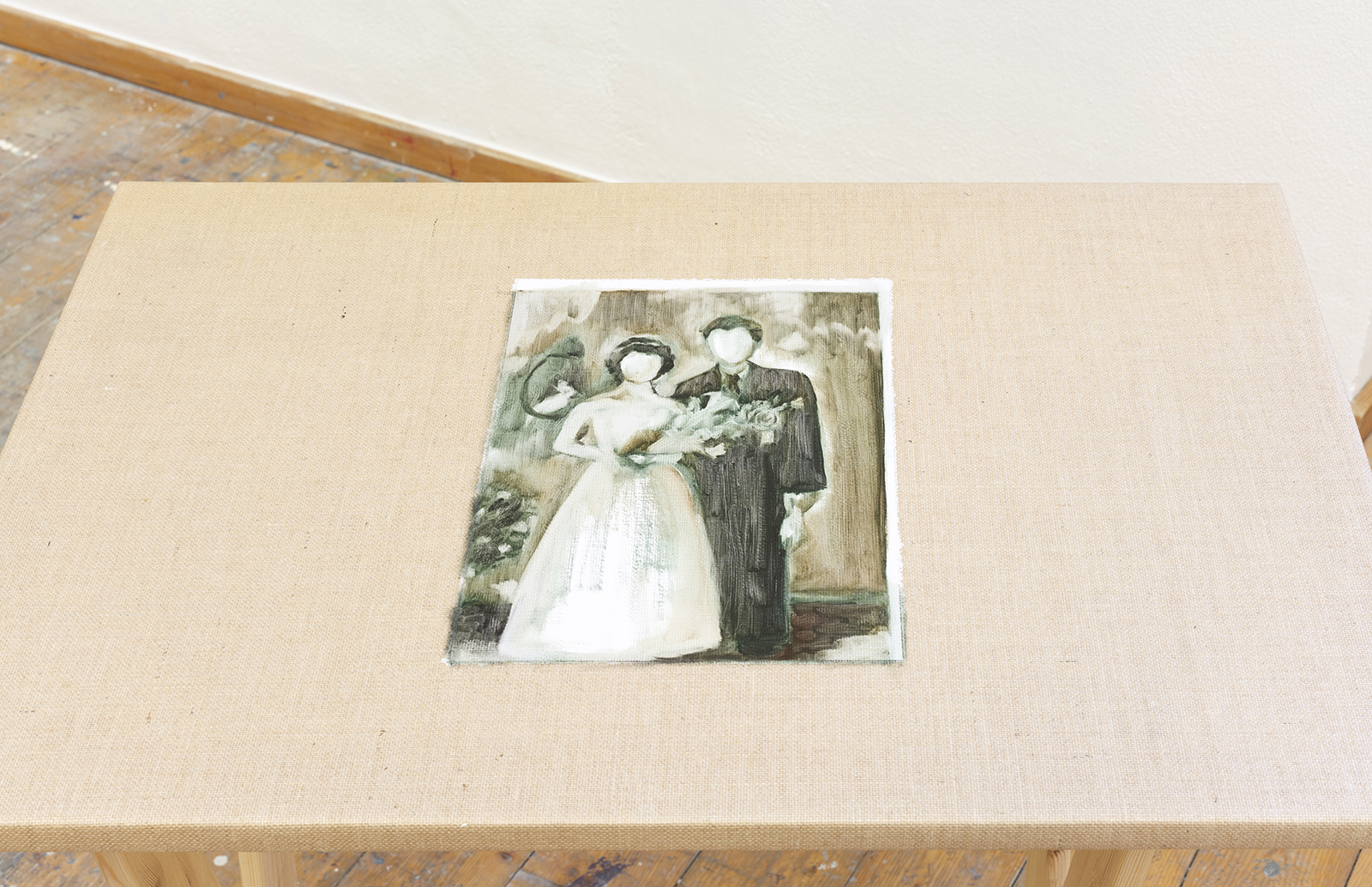
“Restoration”, 56x78x82cm, oil on canvas on bars, 2021

“Flash bubble (Fall)”, 56x42 cm, oil on canvas, 2021

“Note”, 74x55cm, oil on canvas, 2021


“Bars,dots,luminous”,70x50cm,oil on canvas,2020, private colleciton

“Is”, 32x40cm, oil on canvas, 2019

“Dissolving into two parallels”, 50x40cm, oil on canvas, 2020, private colleciton
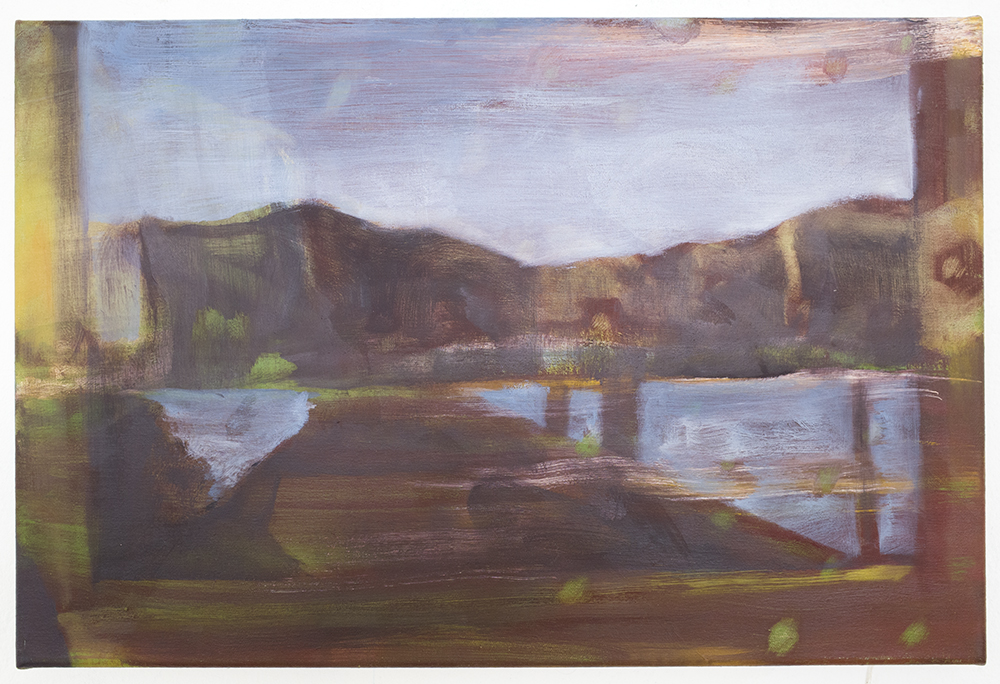
“Moving image”, 30x45cm, oil on canvas, 2019
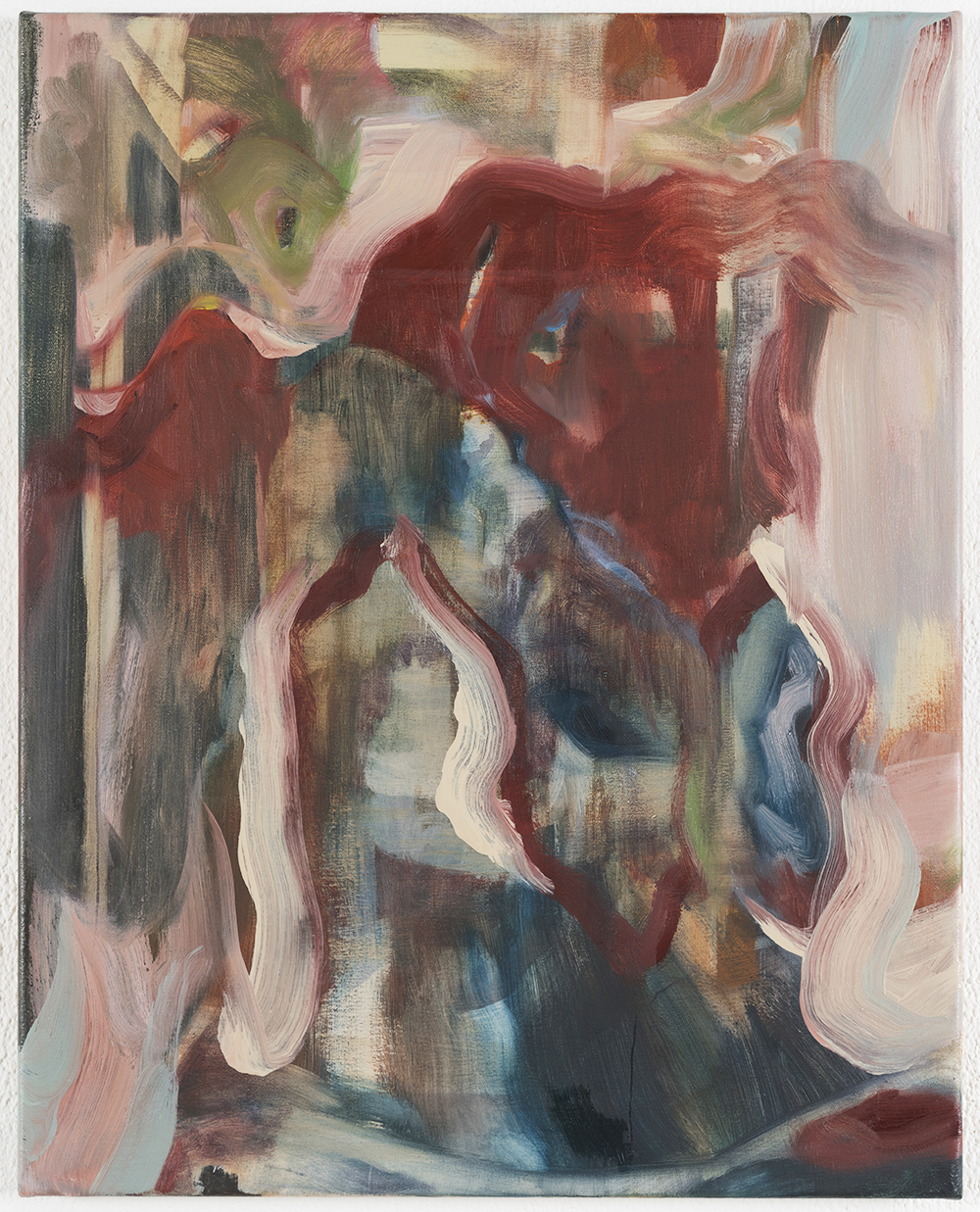
“Metamorphosis ”, 50x40cm, oil on canvas, 2018

“Traces (Left&Right) ”, 24x30cm/24x28cm, oil on canvas, 2018

“Association with writing hand”, 105x70cm. oil on canvas, 2021

“Red swirl”, 43x24cm, oil on canvas, 2019, private colleciton

“Sea of ritual”, 33x30cm, oil on canvas, 2019
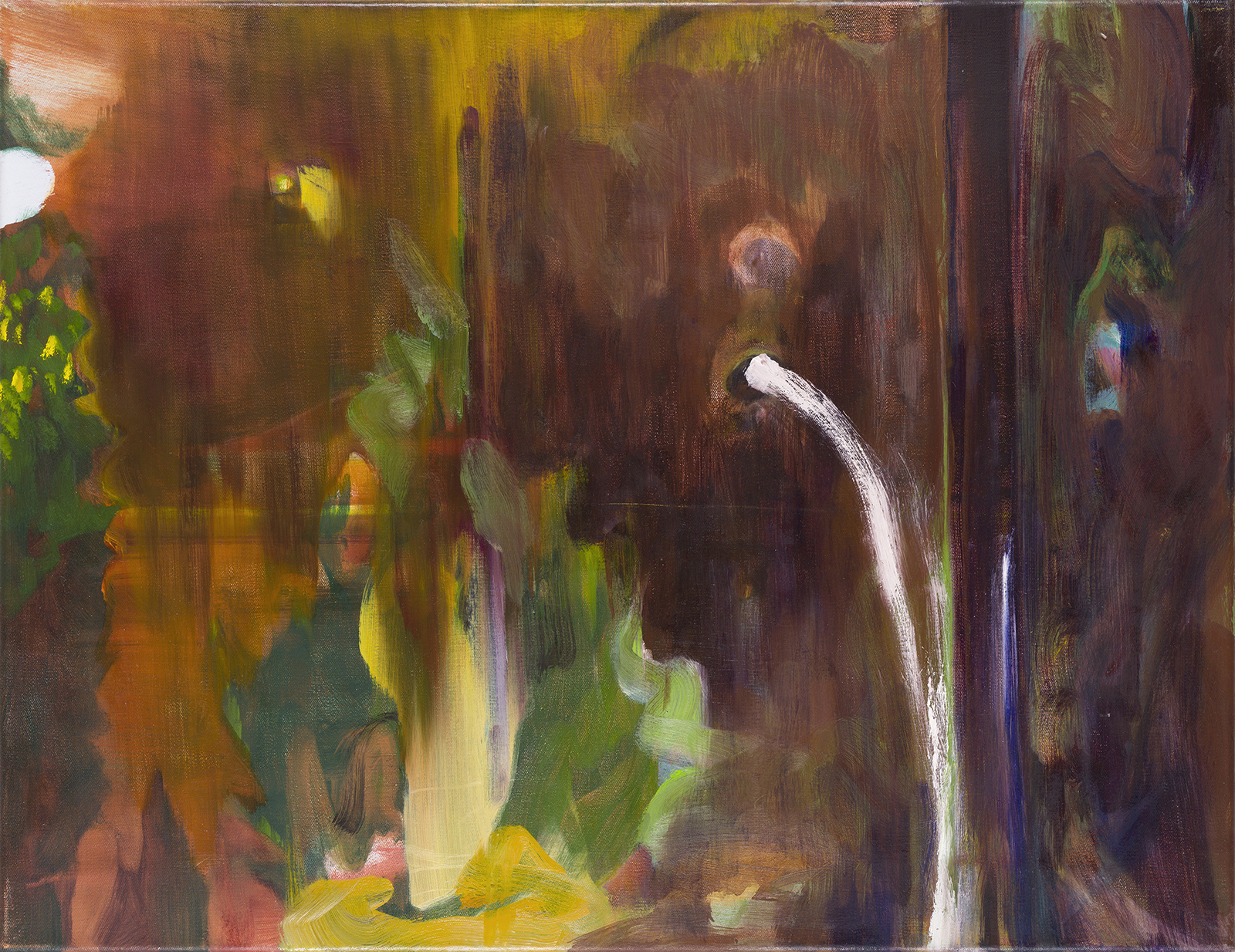
“Study for bars (fall)”, 43x56cm, oil on canvas, 2020
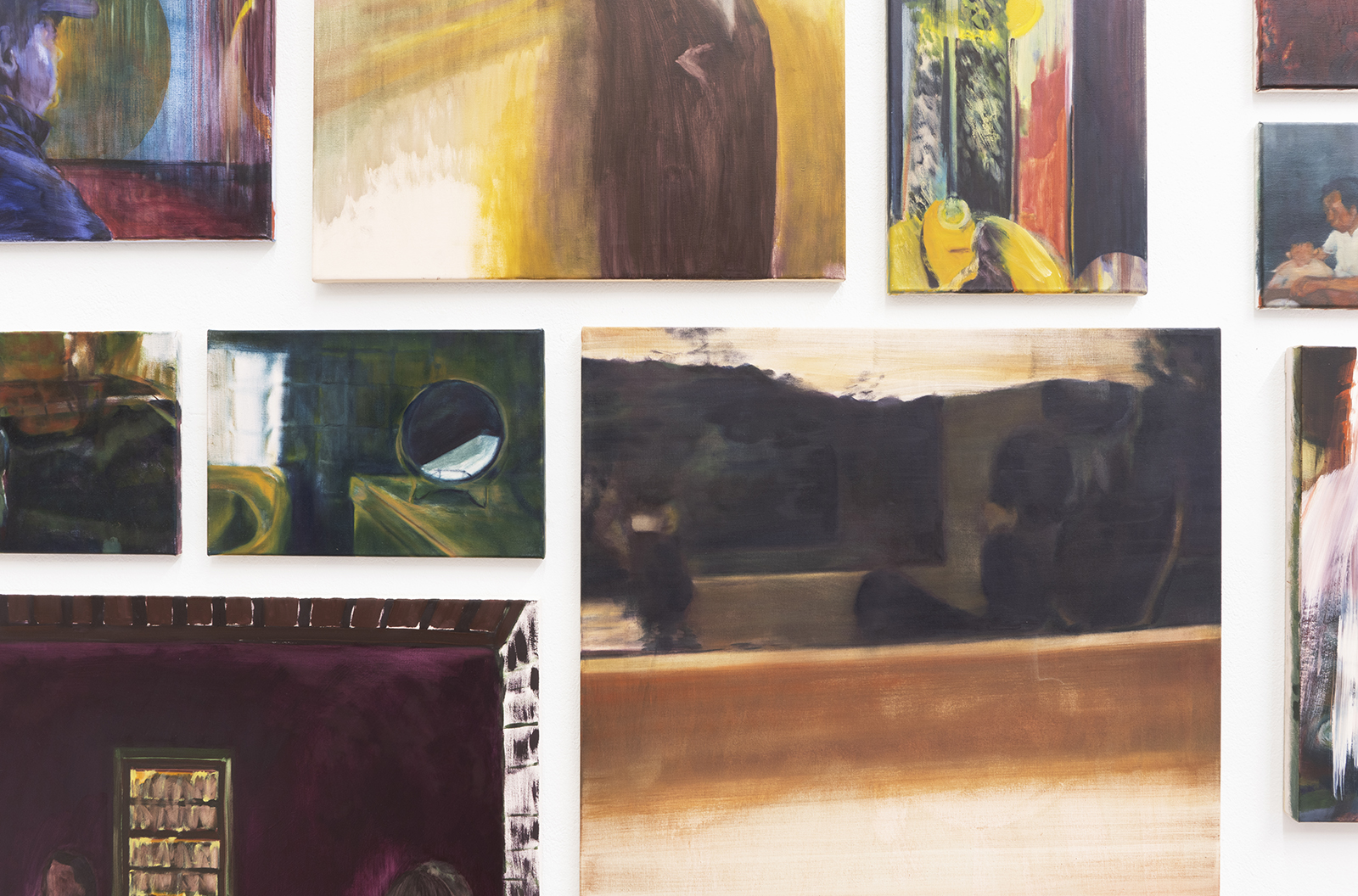
Detail of the installaiton view,

“Figure in front of a projetion”, 56x90cm, oil on canvas, 2019

“A point of view”,56x42cm, oil on canvas, 2020

“Fragments (firgures)”, 30x45cm, oil on canvas, 2019

“Late afternoon, Saône”, 60x50cm, oil on canvas, 2019
The puzzle of Chin Meng-Hsuan’s painting resides first of all in what she once told me: “I begin by working on a scene, a portrait or an object, until a certain stage. Movements and gestures then take over; erasing and overlapping become inevitable. In the end the whole picture transforms in an unforeseen way.” That is, what has once appeared but retreated from the surface does not manifest visually as part of the outcome. Herein there is an unsolved question: Why this denial of visibility?
Looking at her work in progress one finds difficult to resist associating it with the mechanism of dream and memory. It was said that the very awakening moment is also a moment when the dreamer is dismissed from the sensuous imagery. Therefore every effort to recall one’s dream culminates in a radical reconstruction of the images. The same principle applies to reminiscence. Only in the wake of the denial can the images become figurable through the impossible but stimulating means of recollection. For sure dream and memory serve commonly as narrative device in the painting. Nevertheless, it will be rewarding to observe how the painting explores the process of figuration itself.
The space on the canvas proves to be ideal for such exploration. The constantly deferred finding provides no less pleasure than the totality of narration subjected to a single glance. The tension between failing to grasp and understanding everything is largely due to the material existence of the painting. Brush, stroke, spot, scratch cannot proceed without the material adding up. This simple fact in physics affects what we know, perhaps too confidently, as pictorial representation. Here people, interiors, landscapes might be recognizable in some pictures, while their details collapse. In any case the substance remains there, inviting the eyes to drift across the canvas. Dispersion at work pushes the boundary of representation.
The dispersion of figures and surroundings. The dispersion of spatial and temporal markers.
Accordingly, the distinction of one thing from another is only a matter of degree in the painting. The apparent lack of depth functions as beacon to multiplied traces, and brings to life all tangible elements for the reorientation of a view. This would require an idea of painting that the painted space can extend both laterally and through its thickness. Trying to make sense of the interdependence between layers, Chin Meng Hsuan seems willing to accept the uncertainty brought up either by a fleeting glimpse or a contemplative gaze. Her experiment asserts its vibrance when working towards the abstraction of this very experience. In the process, the presence of the painting gives rise to dispersion, a possible approach to recollection — a more material one.
Yen. W. -Y.
Looking at her work in progress one finds difficult to resist associating it with the mechanism of dream and memory. It was said that the very awakening moment is also a moment when the dreamer is dismissed from the sensuous imagery. Therefore every effort to recall one’s dream culminates in a radical reconstruction of the images. The same principle applies to reminiscence. Only in the wake of the denial can the images become figurable through the impossible but stimulating means of recollection. For sure dream and memory serve commonly as narrative device in the painting. Nevertheless, it will be rewarding to observe how the painting explores the process of figuration itself.
The space on the canvas proves to be ideal for such exploration. The constantly deferred finding provides no less pleasure than the totality of narration subjected to a single glance. The tension between failing to grasp and understanding everything is largely due to the material existence of the painting. Brush, stroke, spot, scratch cannot proceed without the material adding up. This simple fact in physics affects what we know, perhaps too confidently, as pictorial representation. Here people, interiors, landscapes might be recognizable in some pictures, while their details collapse. In any case the substance remains there, inviting the eyes to drift across the canvas. Dispersion at work pushes the boundary of representation.
The dispersion of figures and surroundings. The dispersion of spatial and temporal markers.
Accordingly, the distinction of one thing from another is only a matter of degree in the painting. The apparent lack of depth functions as beacon to multiplied traces, and brings to life all tangible elements for the reorientation of a view. This would require an idea of painting that the painted space can extend both laterally and through its thickness. Trying to make sense of the interdependence between layers, Chin Meng Hsuan seems willing to accept the uncertainty brought up either by a fleeting glimpse or a contemplative gaze. Her experiment asserts its vibrance when working towards the abstraction of this very experience. In the process, the presence of the painting gives rise to dispersion, a possible approach to recollection — a more material one.
Yen. W. -Y.
© 2023 Chin Meng-Hsuan. All rights reserved
Windows, doors, stairs - rooms allow deeper insights
2020, Wanghohmann Galerie, German
Views from outside to inside and again from inside to outside - the observer looks at vacant rooms and seeks support before window or open door frames offer a view extension that turns out to be deceptive. Sometimes it is a curtain, sometimes only a hint of outside light, which finally brings the viewer back into the room, where mostly only cutouts are revealed. Empty of people does not mean uninhabited, and so the traces of everyday existence can be seen in the blurred appearance. Perhaps someone has just walked down the corridor or a neighbor has watered the sparingly colored flowers on the window-sill. Frozen moments of the interim, in which the old has ceased, the new has not yet begun.
Only at first glance does the interior refuse to provide information about the residents. Then here and there the peculiarities come to the fore: tided up , put to one side, sorted. The painting frame is multi-cut-out, stair landing. Vertical and horizontal lines structure the rooms like intersecting blades, narrowing and delimiting them. They are not welcoming rooms, but rather sober conditions committed to everyday life, into which we burst like unexpected guests.
Then, as if to comfort us, she appears - enclosed by the window frame - the barely recognizable silhouette of a young woman, her head bent forward, her long hair falling in front of her face. Green dominates and makes her become one with her surroundings, while a vibrant orange falls in from outside.
Chin Meng-Hsuan uses a wide range of colors, but at times prefers the cold, restrictive palette. Violet, brown, blue, yellow, mixed and graded, applied flat. In the semi-darkness, objects slowly gain contour, only to reappear unrecognized as soon as the gaze looks its firmness. The chosen formats underline the composition, while the staggering into the depth of the painting suggests a first line of sight. No one is waiting there.
(Ling Wang/ Uwe Hohmann)
Only at first glance does the interior refuse to provide information about the residents. Then here and there the peculiarities come to the fore: tided up , put to one side, sorted. The painting frame is multi-cut-out, stair landing. Vertical and horizontal lines structure the rooms like intersecting blades, narrowing and delimiting them. They are not welcoming rooms, but rather sober conditions committed to everyday life, into which we burst like unexpected guests.
Then, as if to comfort us, she appears - enclosed by the window frame - the barely recognizable silhouette of a young woman, her head bent forward, her long hair falling in front of her face. Green dominates and makes her become one with her surroundings, while a vibrant orange falls in from outside.
Chin Meng-Hsuan uses a wide range of colors, but at times prefers the cold, restrictive palette. Violet, brown, blue, yellow, mixed and graded, applied flat. In the semi-darkness, objects slowly gain contour, only to reappear unrecognized as soon as the gaze looks its firmness. The chosen formats underline the composition, while the staggering into the depth of the painting suggests a first line of sight. No one is waiting there.
(Ling Wang/ Uwe Hohmann)



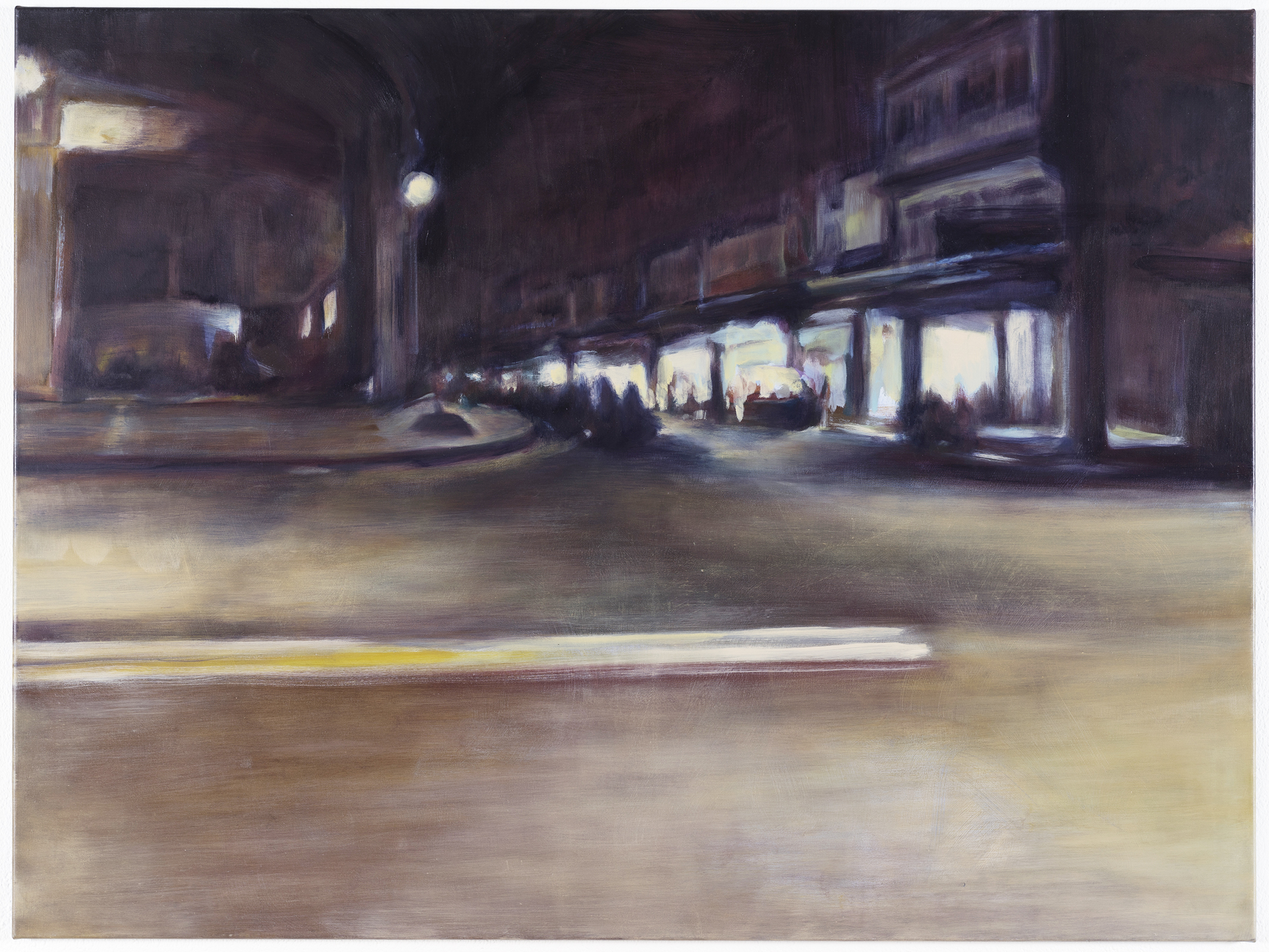



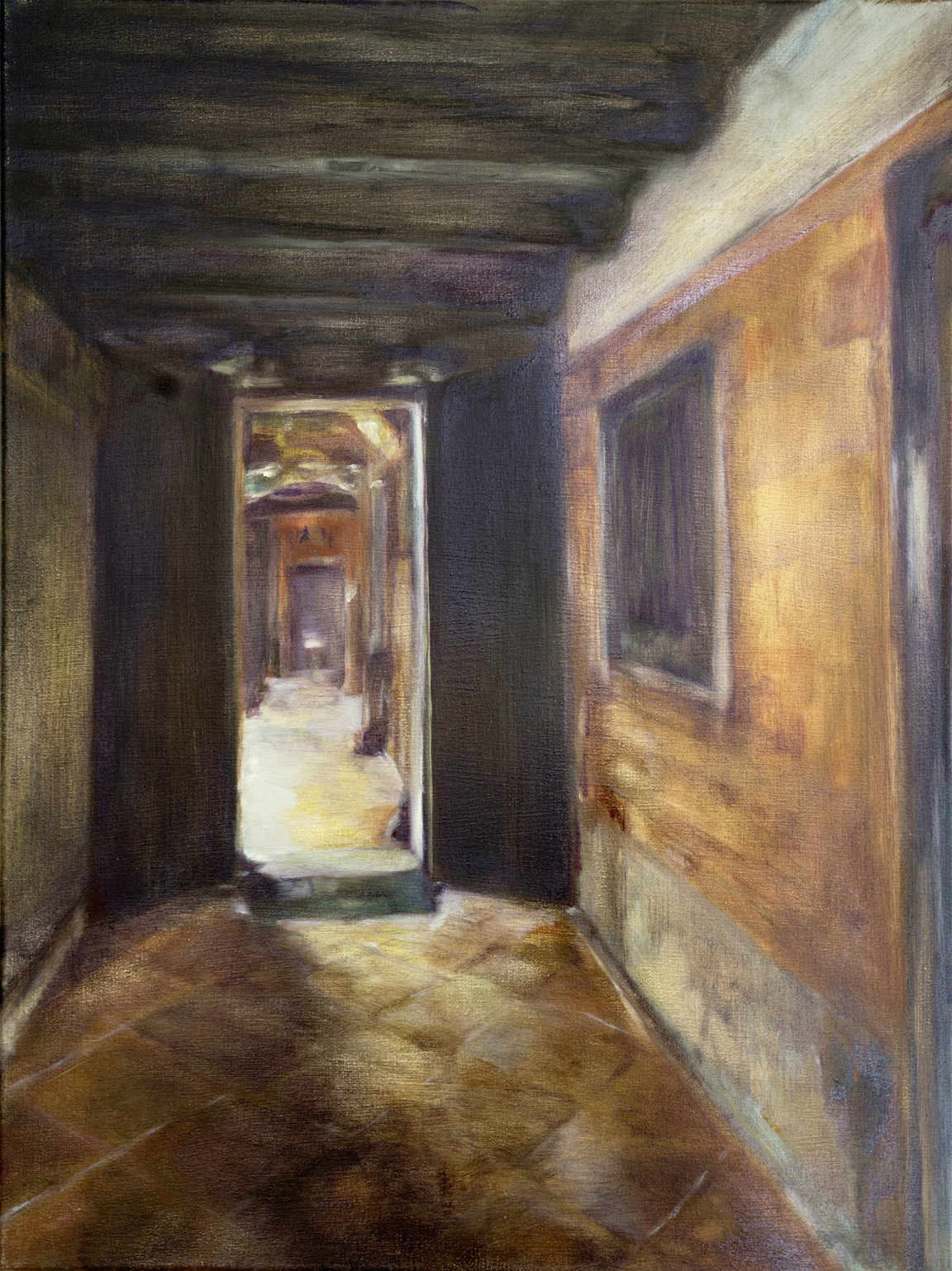






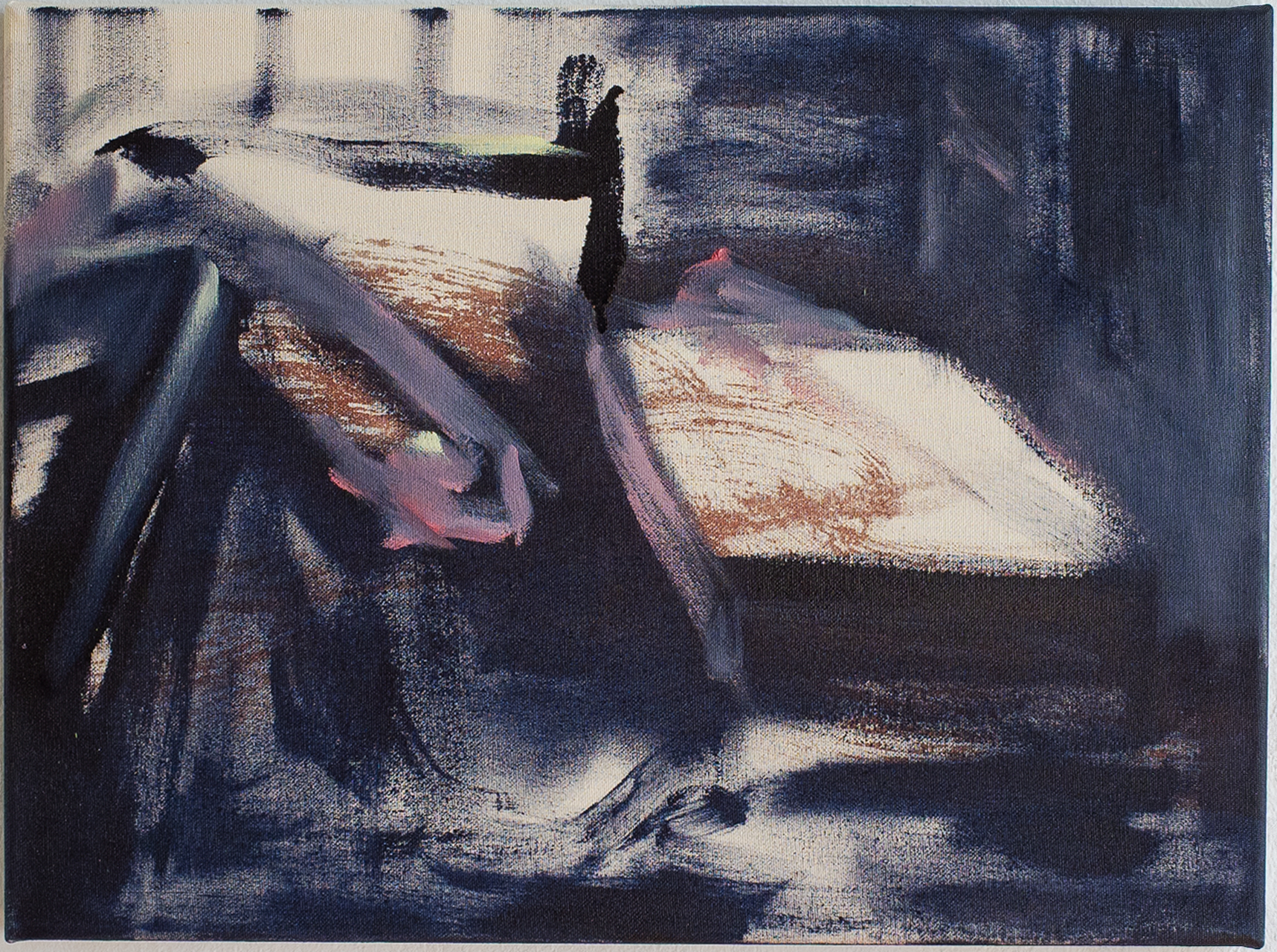
© 2024 Chin Meng-Hsuan. All rights reserved
Message from South
Chin Meng-hsuan solo exhibition
Gabriele space, Munich, Germany,2022
Gabriele space, Munich, Germany,2022

“Message from South“ is a project that derived from a personal migration history. “South” refers to locations that I dwell in diffrent phrase of life which all linked to relatively south in geographical terms. From this point, I trace back to what my experience was, looking back to those days and its association of water elements. Most of the works included in this show are sketches, notes and little paintings that through I made through out the years and didn’t have a clear category to include them. Surprisingly this project space has made it possible to puzzle them altogether.
Two works are made particularly for this show : 1. “A River in Front of My House”, is comprised of a thirteen-meter-long scroll, with bases of painting and pigments thoroughly scattered. The composition unfolds in an arched shape while inviting viewers to adjust their perspective as they walk alongside it. Functioning as a prelude (which can nevertheless be placed not only at the beginning), this part initiates visual and imaginative engagements. 2. “Message from South”, is a sound and light installation. The S projected on the wall is literally taken from the S of "South" and a play of sound pronounced by the alphabet. For the sound, I have asked my family back in Taipei to recotrd all kind of noise in Taipei during the time. I have edited them togehter and play it as loop in the background, including the raining days in Taipei City and the specific soundtrack played by the garbage truck in Taiwan.
”捎來了,南方“ 這個計畫源自我對個人移居經驗的觀察和思考。“南”在這裏指“南方”:在人生各個階段的移動,我恰巧都落腳在相對南方的所在。從這個想法出發想,我回看過去日常裡的經驗,找到裡頭那共有的元素,水。展覽中展出的作品大多為過去幾年難以定調的各種隨筆、紀錄以及小畫作,意外地一直到這個計畫這才拼湊起來,有了形狀。
展覽包含了兩件新作品:ㄧ、「我家門前有小河」由一件十三公尺的捲軸組成,打底劑、色粉散佈其上,構圖透過捲軸弧形展開,邀請觀眾一邊走動、一邊調整視線,這一部分首先開啟視覺和想像的同時運作,帶有序曲的意涵。二、「捎來了,南方」(展覽同名),為一件光影和聲響的裝置。牆面上投影的S是英文字母南方的第一個字母,想藉由S的字音帶動聽覺的聯想。聲音部分,在與家人的通信和協助之下,擷取了當時夏天時而下雨、時而蟬鳴的台北,台北城市裡的各種聲音,如垃圾車的隨車音樂,在此次展覽的展場開頭處,循環播送。

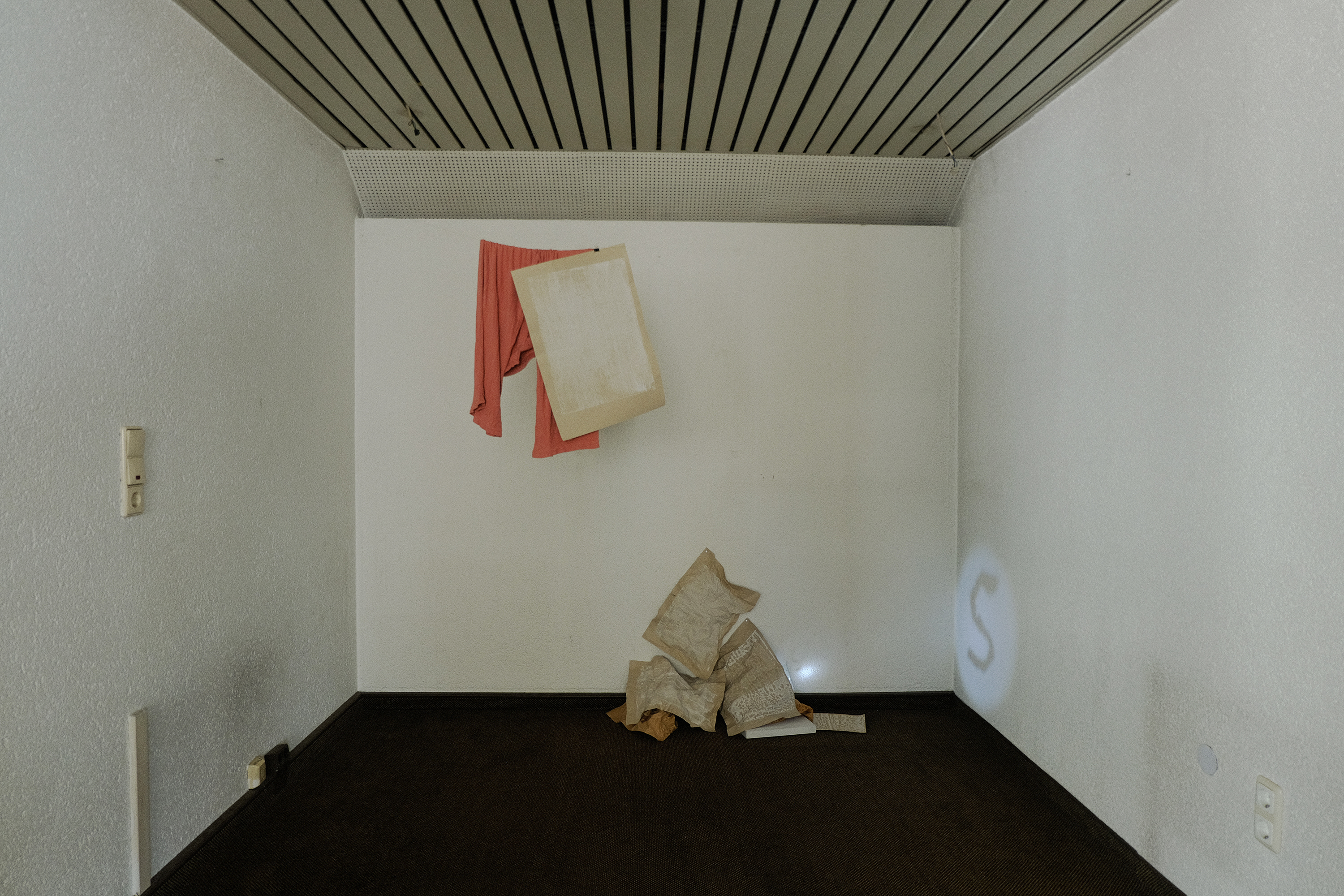


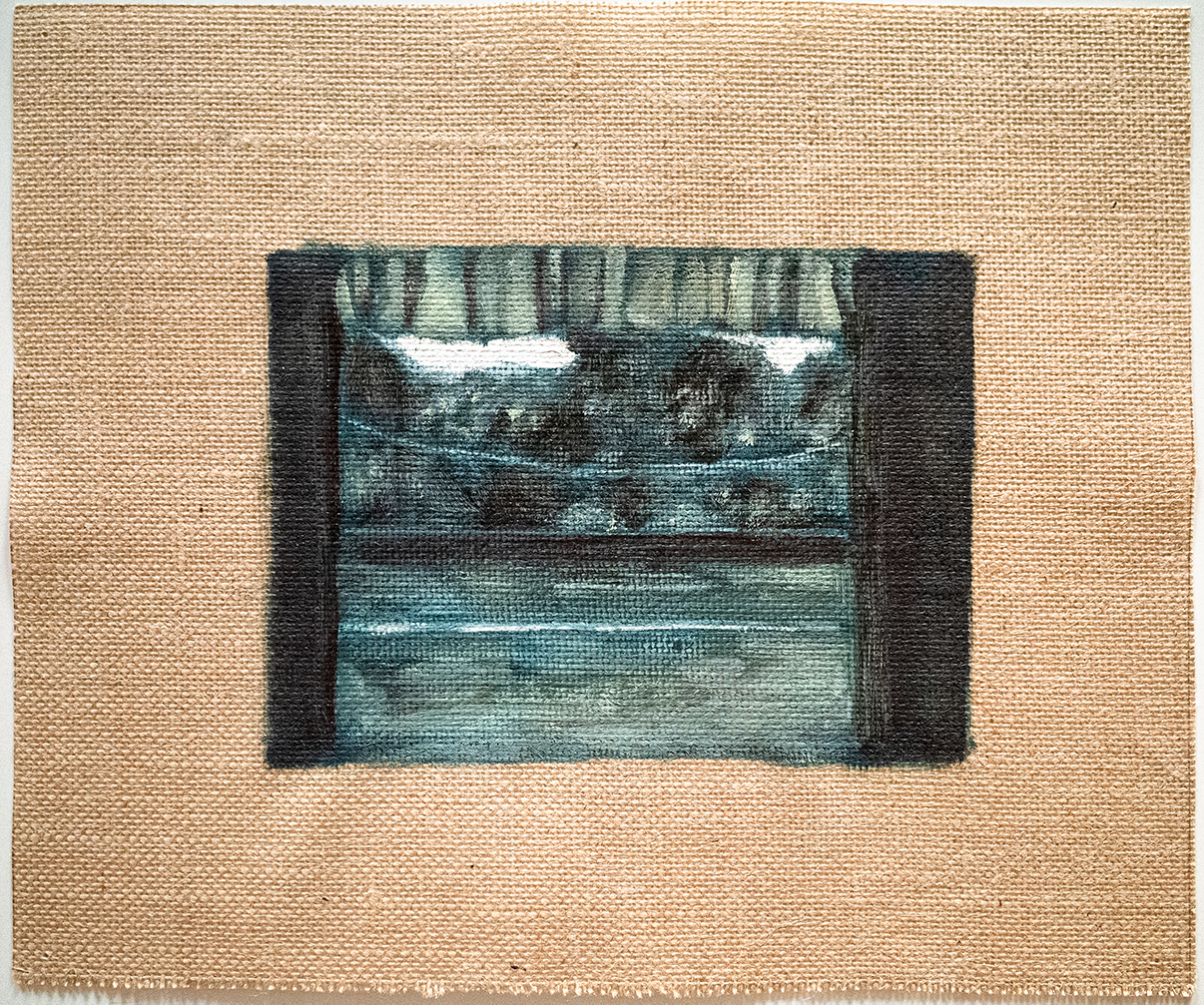




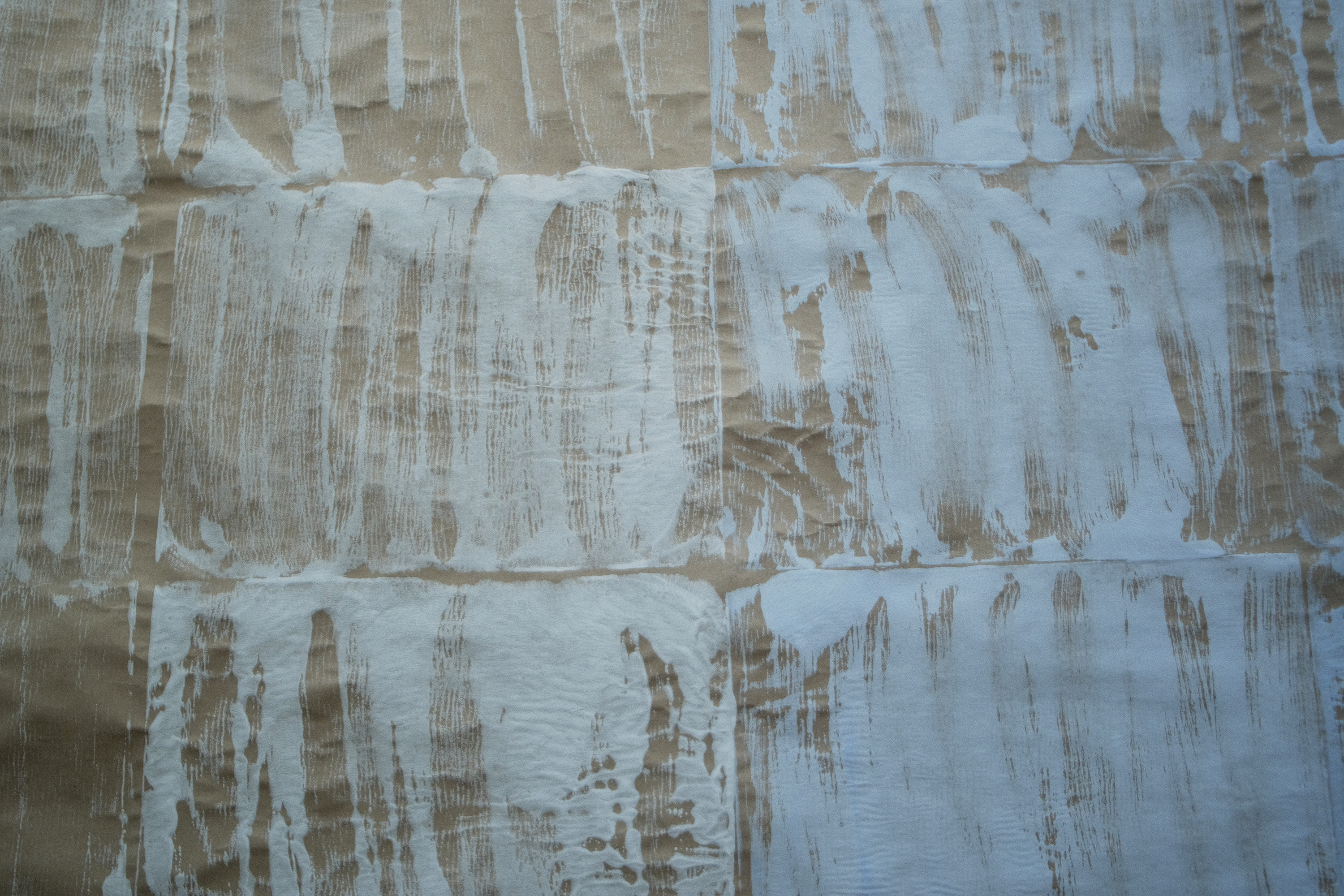


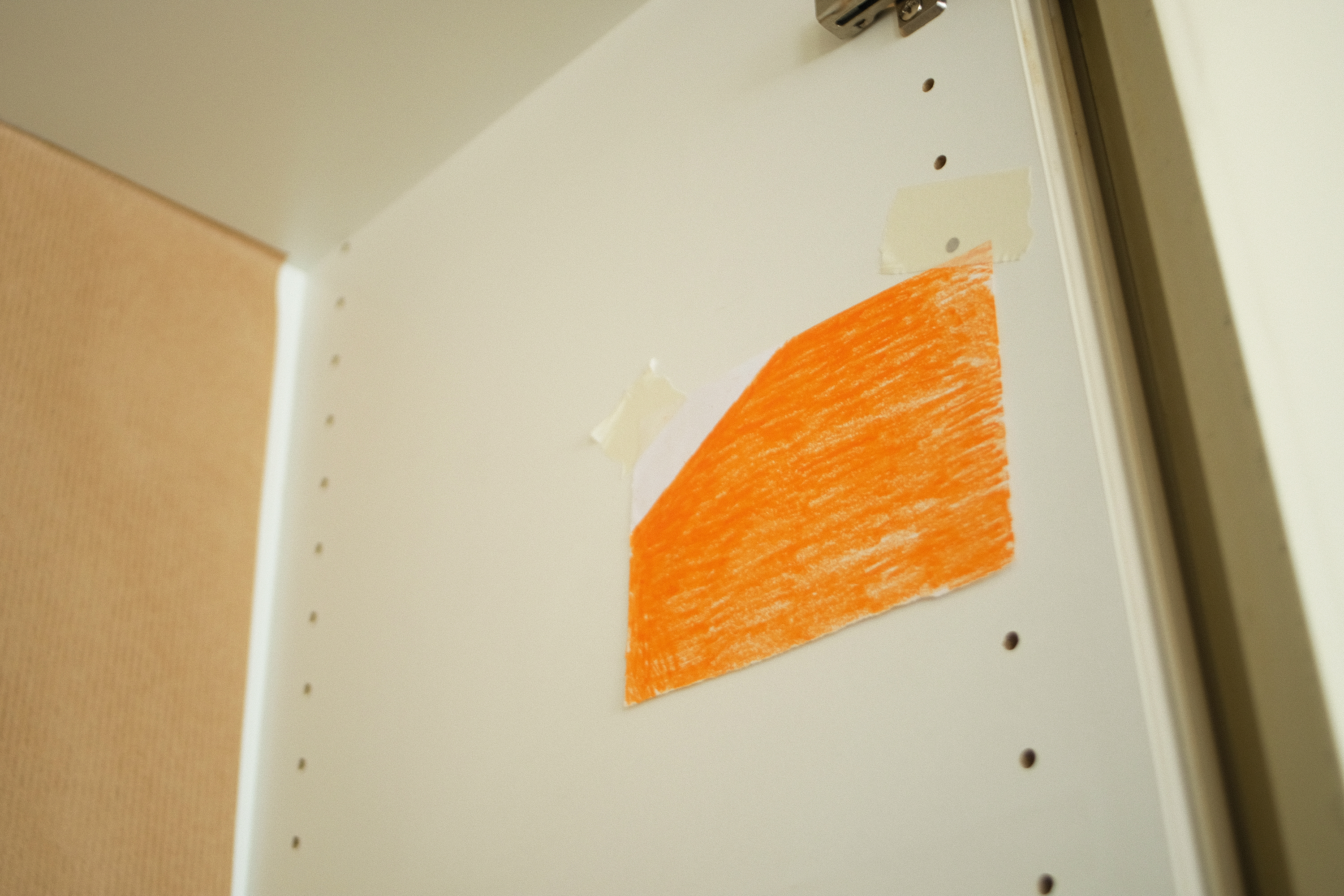


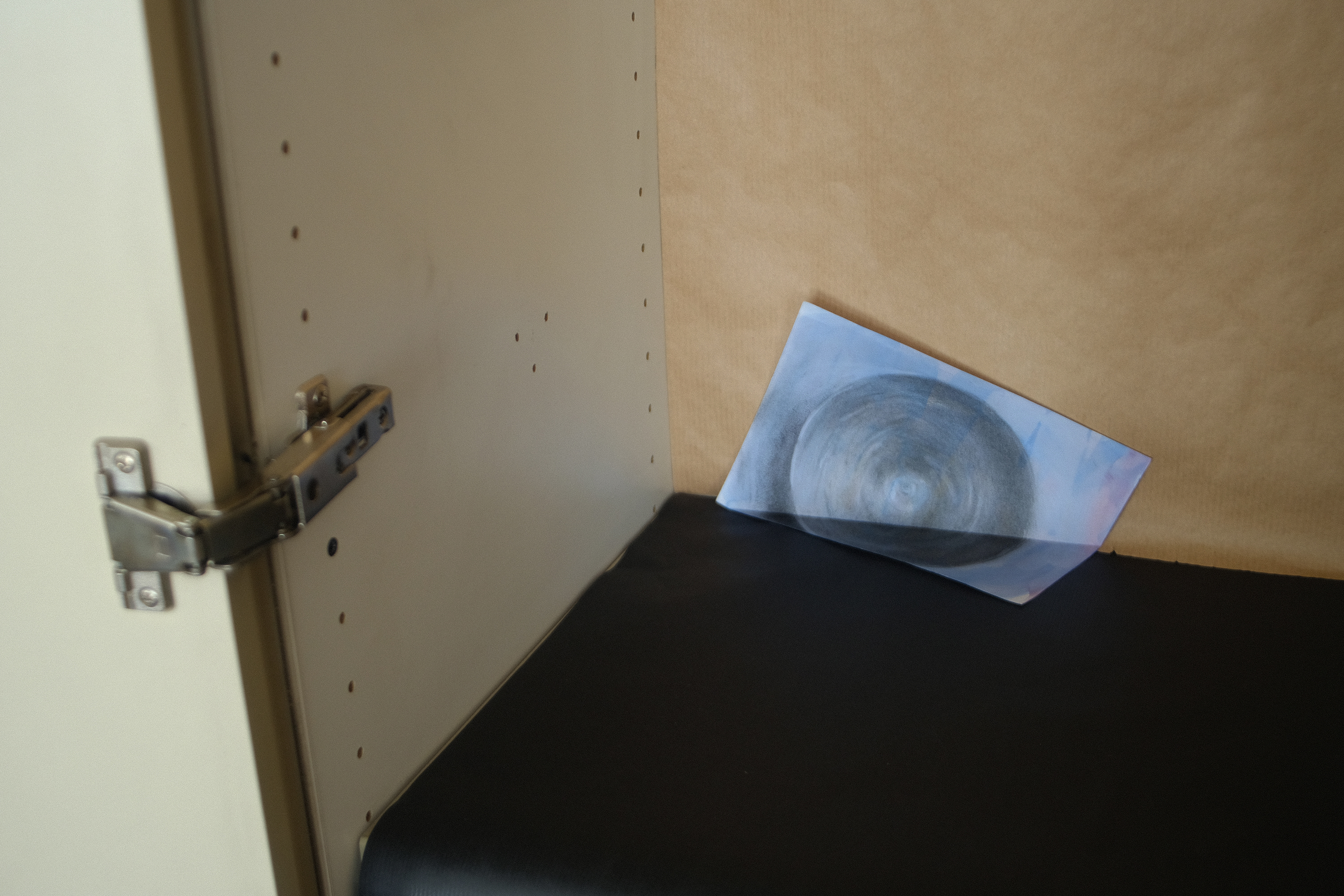

© 2022 Chin Meng-Hsuan. All rights reserved
